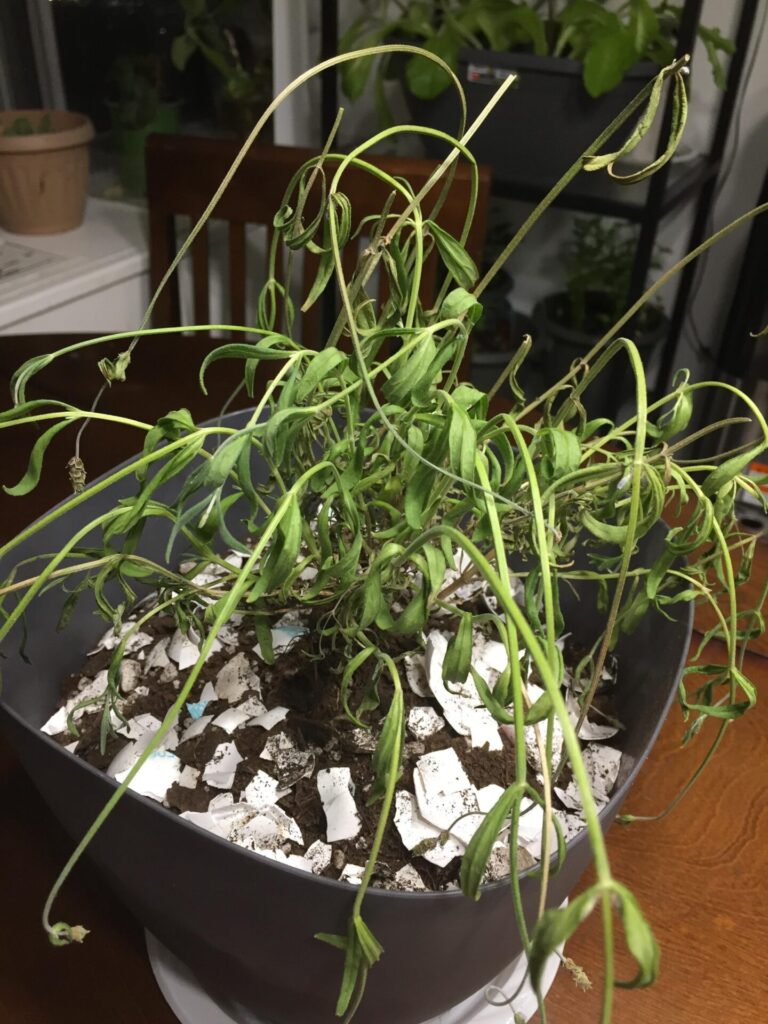
Hello!
First of all thank you for your website, it’s very helpful so far with some of my questions answered already. I live in East York and I bought an English lavender plant and am growing it in a container. Two weeks have now passed and my lavender seems to be consistently droopy and does not perk up at night as what most forums say they do when they’re conserving water. Furthermore, the stems have become very brittle and woody.
A little bit more about its living conditions: since I live in south Toronto, my climate zone would be 6a. I leave my lavender plant by my corner window facing south and west to ensure it gets sufficient sunlight. I also spray water on my plant once a week to prevent soil moisture and root rot. I have transferred the lavender plant from its original pot to a bigger one and added some basic potting mix, but I am not sure what type of soil it is (although I know it is not sandy). I have also included crushed eggshells in order to make the soil more alkaline.
Will I still be able to rescue my lavender plant if the mother stem is already woody? There are still many green stems shooting from the woody mother stem however. I would like to know what steps I can take to rescue my plant if it’s not too late (i.e. how to prune properly, watering, soil conditions). Thank you in advance for your help!
Below you will find a list of basic care instructions for English Lavender – Lavandula angustifolia.
- Planting outside is ideal.
- If planted in a container – pot of 12 inches or bigger is necessary.
- Pot must have a drainage hole in the bottom.
- Best suited soil type is sandy, well drained, slightly alkaline (pH of 6.7 – 7.3).
- Light exposure – 6 hours of full sun daily.
- When young, water thoroughly once per week. Older plants are more drought tolerant (see number 7).
- Water requirements – in a pot, water when it is dry so that the water flows freely from the pot hole.
- Feed once a week with a water soluble 20-20-20 fertilizer at half strength.
- Stop feeding and cut back on watering in the late fall.
- Overwinter in a cool garage or indoors.
- Water very sparingly from November to February.
- Pruning should be done in the spring when the plant is coming out of dormancy.
From both your picture and description, I think your plant may have a few issues – see numbers 2, 3, 4, 5, 6 and 8. If you can get your plant outside, into a suitable pot with appropriate soil and start to feed it, I think you have a great chance of reviving it and getting some wonderfully fragrant blooms.
Good luck.

